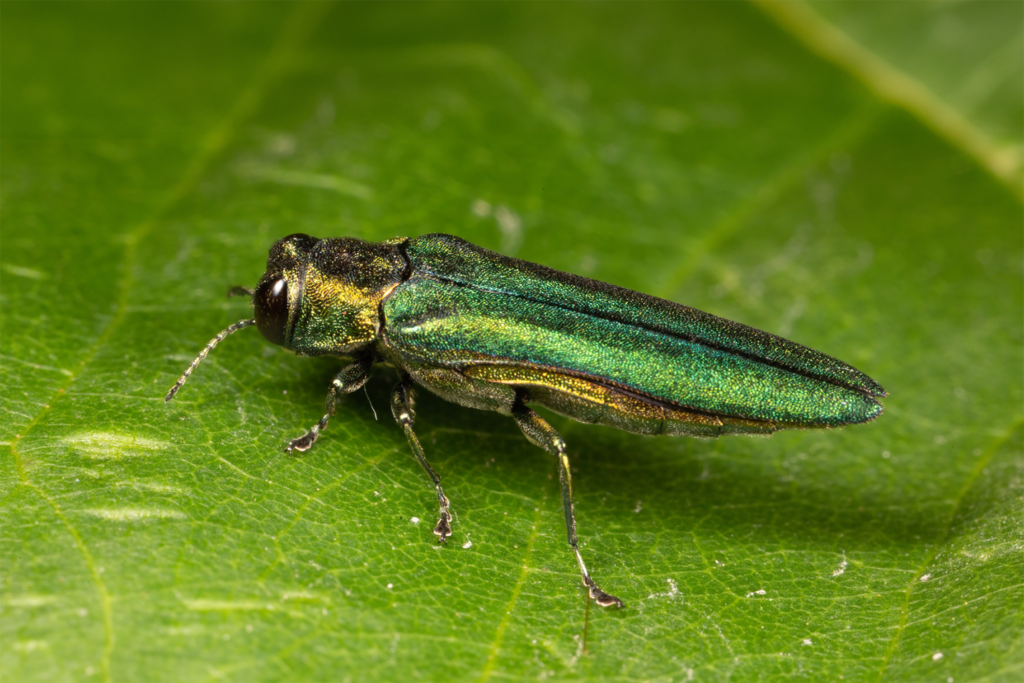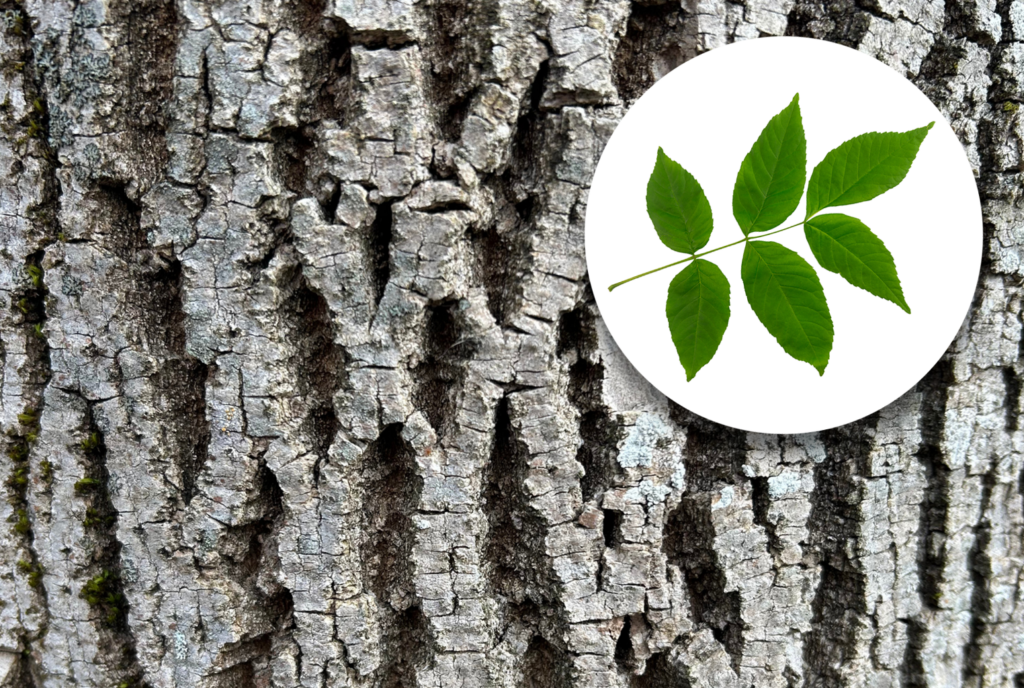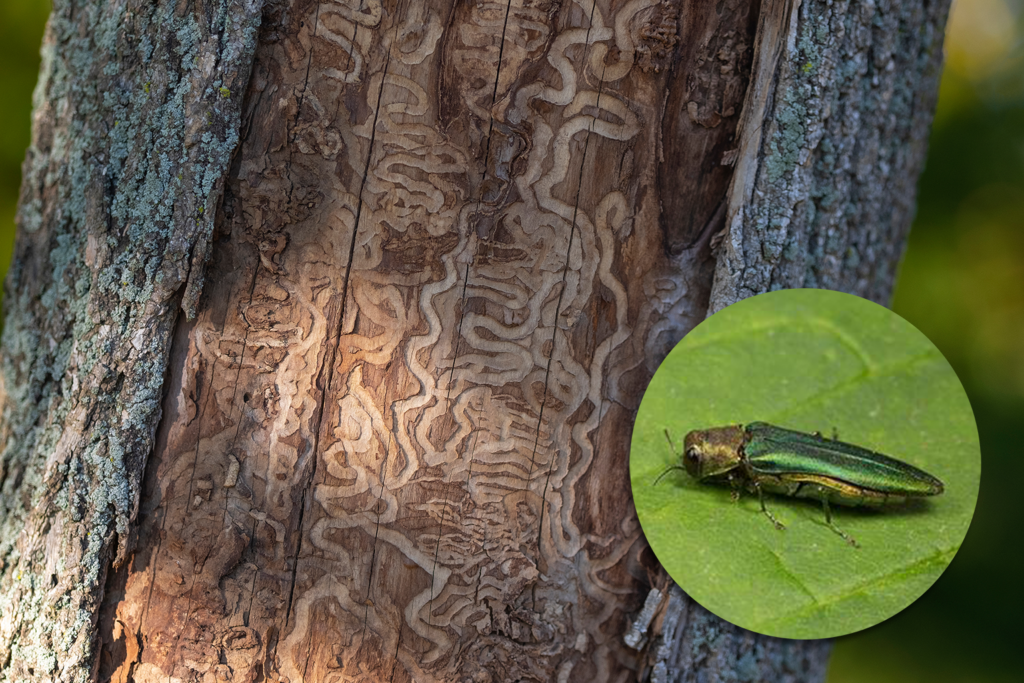Emerald Ash Borer

Emerald Ash Borer (EAB)
We’re closely monitoring emerging issues with the emerald ash borer beetle. We are proactively reviewing Vancouver’s trees to determine where ash trees are located on parks, streets and public lands and are watching trees in our area for the emerald ash borer. No sightings of the iridescent green beetle have been confirmed in Washington.
Emerald ash borer (EAB) is an extremely destructive insect and poses a serious threat to ash tree populations. The emerald ash borer is a wood boring beetle that has become established in many parts of the United States and Canada, most recently discovered in Forest Grove, Oregon in June 2022. The invasive, iridescent green beetles have killed up to 99 percent of ash trees in some North American communities since they were first discovered in the Michigan area in 2002.
Ash tree species, such as green and white ash, are very common in Washington. The beetle could pose a threat to ash trees in our region’s forests and urban areas. Vancouver is home to the native Oregon ash, which plays an important ecological role near waterways, and ash species from the eastern United States and Europe, which are found throughout the urban forest in parks, along streets and near homes.
City’s efforts include proactive treatment and removal of ash trees
We are making proactive preparations to treat public ash trees and remove trees when necessary. Ash trees are being evaluated and treatment injections applied when possible. Mature ash trees in good condition and significant trees on public property will be treated on a routine cycle. In 2024, 19 trees will be treated to help prevent infection. Some ash trees will be removed in parks and public areas when the tree is already in decline, not suitable for the current location and susceptible to the beetle infestation. Smaller ash trees, under 10 inches in diameter at breast height will be removed. If trees are removed, new trees will be replanted with suitable and beetle-tolerant species. We developed the Emerald Ash Borer Management Plan to effectively detect, inventory, monitor and respond to EAB.

Ash tree identification
Ash trees have opposite buds, diamond-shaped ridged bark, five to nine leaflets on each stalk and paddle-shaped seeds.
Identify emerald ash borer and signs of infestation
Adult beetles are approximately one-half inch long and have an emerald green head and back and a coppery reddish purple abdomen. EAB larvae create S-shaped galleries (tunnels) under the bark. You will begin to see thinning of the leaves in the canopy, usually starting at the tops and sides. “D” shaped exit holes, which are created when the mature beetles exit the tree, definitively indicate the presence of Emerald Ash Borer.

How EAB damages ash trees
Female beetles deposit eggs in bark crevices. As larvae hatch from the egg in late summer, they immediately chew their way into the tree. The larvae tunnel and feed in the nutritious tissue just beneath the bark. Larvae wind back and forth as they feed, creating S-shaped tunnels called galleries under the bark. The larval stage is the most destructive because their feeding behavior disrupts the flow of nutrients through the tree. Larvae feed beneath the bark for 1–2 years and can survive in green wood, such as firewood, if the bark is still attached.
Assess ash trees on your property
Tree owners can remove ash trees that are in poor health and replace them with urban tolerant, long-lived trees. Tree removals may require a permit.
Contact Urban Forestry at 360-487-8325 or urbanforestry@cityofvancouver.us for more information about emerald ash borer. To protect healthy trees, work with a reputable tree care provider to establish a plant healthcare program and preventive treatment options.
While the beetle is harmless to people and animals, it has the potential to destroy the entire genus of ash trees. Trees play an important role in fighting climate change, protecting water quality, creating habitat and providing shade across our community.
To report suspected sightings of emerald ash borer, go online to invasivespecies.wa.gov.


